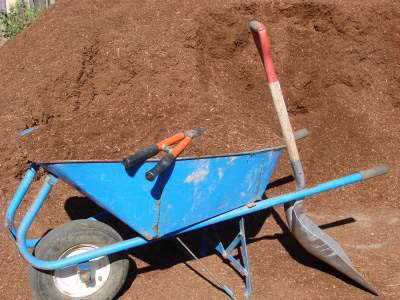Cleanup in the Garden: Healthy Pruning and Mulching of Salvia

Sometimes it’s wise not to get too tidy in the garden. When preparing Salvias for winter dormancy, moderation is the rule. Regional climate affects how much trimming and mulching are necessary in late autumn.
Colder areas require mulching, but no pruning. Salvias in warm regions may benefit from a slight trim, but not a winter blanket of mulch.
Wrong Time for Growth
Woody, perennial Salvias, which are classified as subshrubs, respond to pruning as if receiving a pat on the head and the go-ahead to grow. Herbaceous Salvias, such as Chinese Salvias, are similarly inclined to send out tender, new growth in late autumn if their foliage is trimmed before wilting and dying back to its crown.
Mulching too soon is another way to give Salvias the message to grow when they should rest. In cold Winter areas, developing new growth before the last hard frosts of winter or early spring can harm the vigor of Salvias by causing them to expend energy on growth that won’t last or by damaging stems.
Regional Variation
In general, Salvia responds best to light pruning in early spring after danger of hard frost is past. However, plant response varies in different regions.
For example, the woody species Autumn Sage (S. greggii) tolerates late-Fall pruning in Austin, Texas, which is in USDA Zone 8. It should be sheared back no more than one-third of its height. However, if similarly pruned in Denver -- Zone 5b – the plant’s branches may fill with water and rupture during the local winter cycles of freeze-and-thaw weather.
As to winter mulching, although it isn’t necessary down South or in warm coastal climates, it is a wise choice in Zone 6 or colder areas. A 2-inch layer spread close to the base of woody Salvias and above the crowns of herbaceous species normally is sufficient to keep the ground evenly cool and prevent heaving.
More extreme mulching may be wise for Salvias that are less than a year old and facing their first chilly winter. One method is to surround the plants with blankets of autumn leaves held in place by chicken-wire cylinders.
Light Autumn Upkeep
Although it isn’t the time for hard pruning of Salvias – whether in the North or the South -- autumn is a good period for moderate tidying, including removing spent flower spikes. This allows Salvia to put their energy into root growth instead of seed development. It also prevents overabundant volunteer seedlings in spring.
It's also a good time for removing leaf litter, although different viewpoints exist about the necessity of doing so. While some pesky insects harbor in the organic matter decomposing on the ground, leaf litter acts as mulch in cold-weather areas, feeds beneficial insects and adds nutrients to soil. Furthermore, it attracts earthworms, which aerate and enrich the ground.
Nevertheless, late-autumn removal of leaf litter may be wise if your Salvia plants suffered from fungal disease or pests during the growing season. Keep in mind that it is easier to remove leaf litter before the ground freezes.
In addition to healthy leaf litter, organic winter mulches – such as chopped leaves, tree bark, pine needles or straw – can also enrich soil for spring growth along with preventing soil from heaving.
Heaving is a problem that is more likely to strike a newly planted Salvia that hasn’t yet developed a deep root system. During the winter, if you discover heaving that has exposed a plant's roots, gently firm the Salvia back into the ground and spread a few inches of compost around its base for stabilization. Then put mulch back into place.
In spring, as new growth begins to appear on your Salvias, remove the mulch so crown rot won’t develop and the ground can warm up, wake roots and alert Salvias that it is showtime.

 Salvia sp. from Szechuan
Salvia sp. from Szechuan  Salvia miltiorrhiza
Salvia miltiorrhiza  Salvia nubicola
Salvia nubicola  Salvia przewalskii var. mandarinorum
Salvia przewalskii var. mandarinorum  Salvia yunnanensis
Salvia yunnanensis
Comments